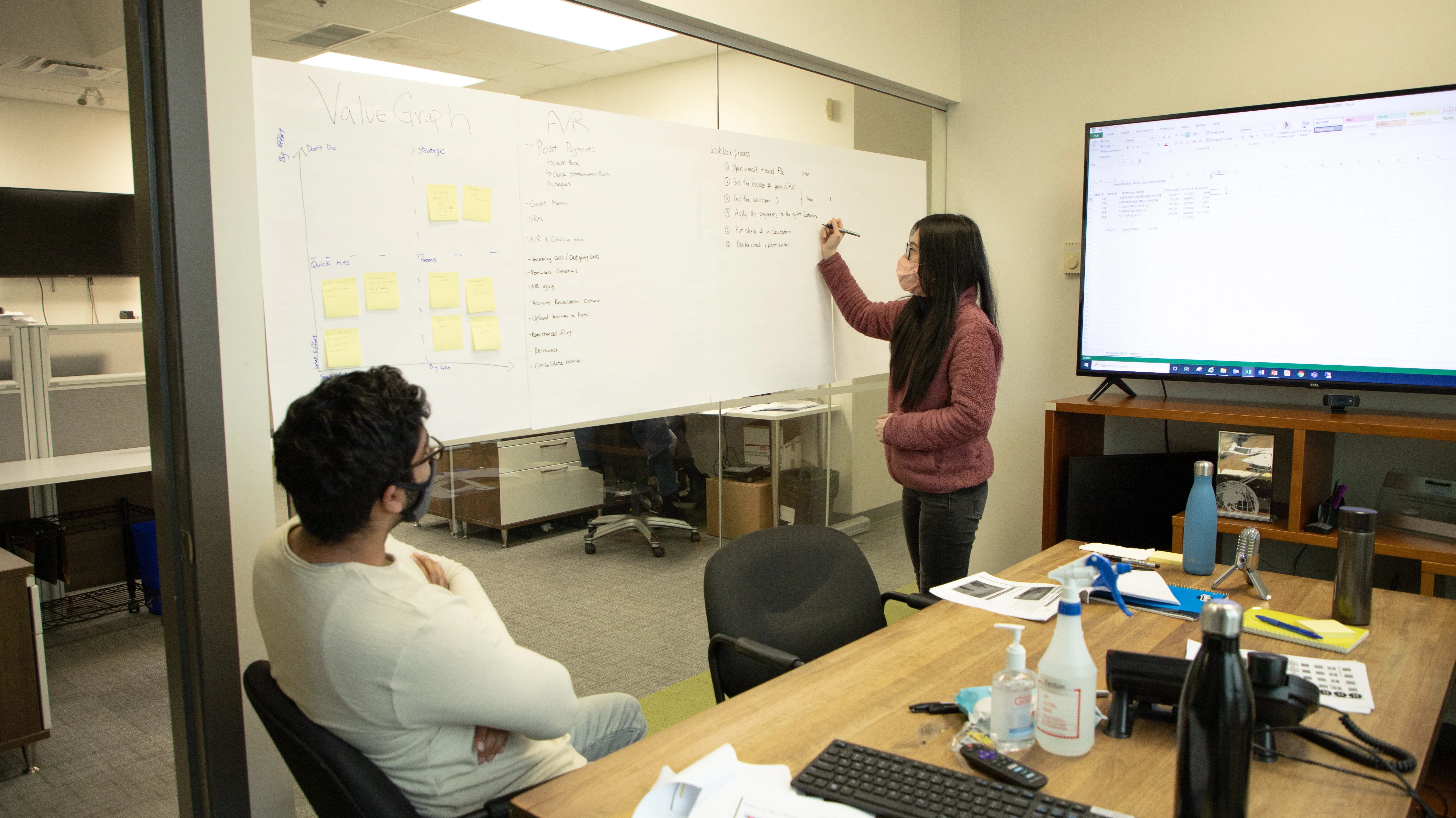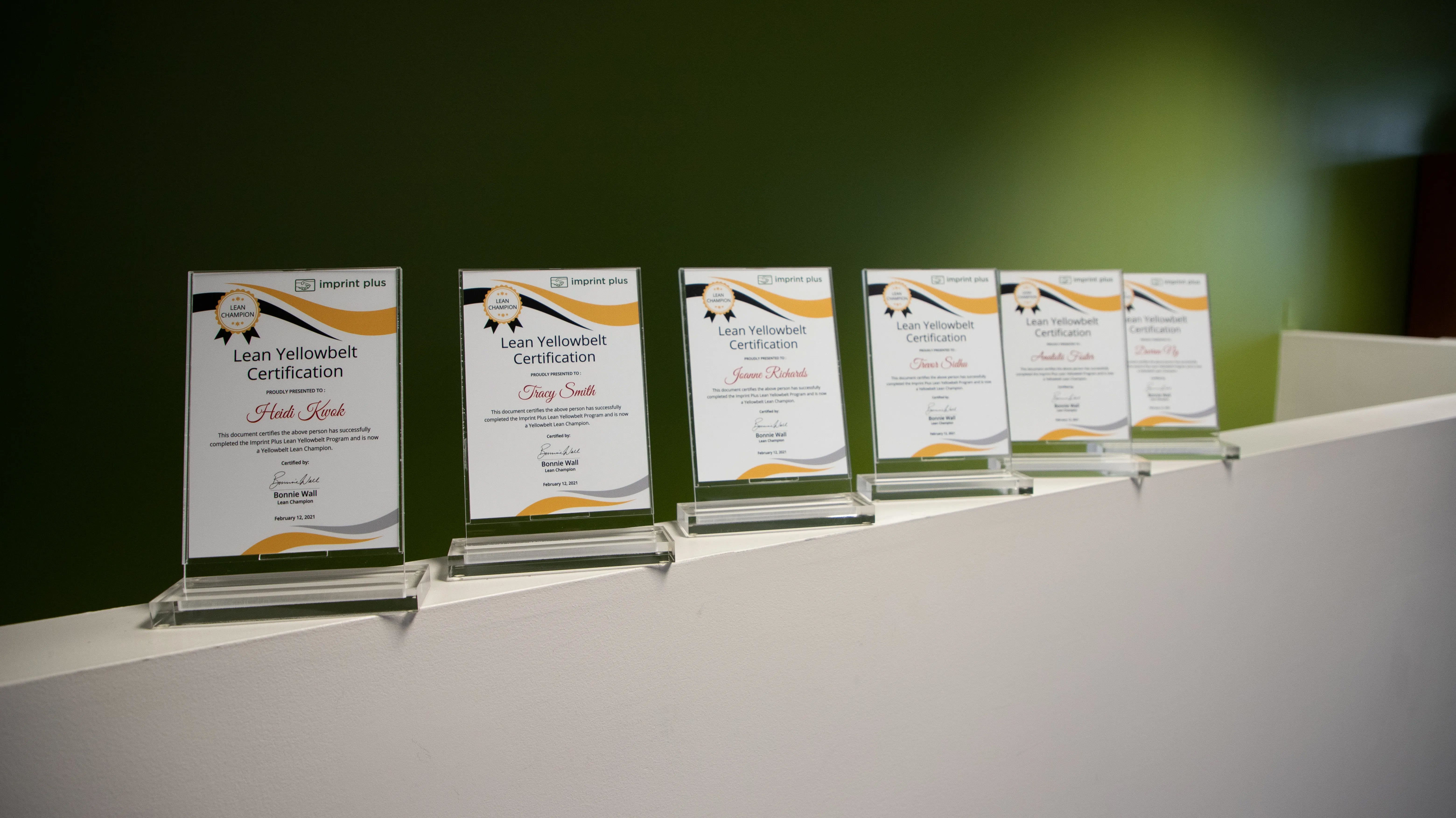
Organizing Processes by Value Stream and Towards High Productivity
We continue our interview with Bonnie Wall from Imprint Plus™ name badges regarding her thoughts on LEAN management. If you missed the first part of this interview, be sure to catch up with Lean Management – How to Be Lean – Part 1, here.
Lean manufacturing to improve cost-effectiveness is one of the targets of LEAN, but it is also an achievable end-result. You save on lead-time, reduce stock and waste, and focus on the improvement of high-quality products.

Do you think cost-effectiveness is a starting point or should LEAN management be reduced to a productivity approach?
Start with productivity, and this will naturally reduce the costs. Lean management is about working smarter not harder. The incentive for our employees is to be able to accomplish more in less time but to make the task easier at the same time.
What is your take on team autonomy and solving problems? How do you improve team performance as well as work standards?
I think it is important for our employees to work in teams to solve problems. Each person brings their experience and expertise to the table. Lean processes cross over through many departments and one small change to a process could affect someone else’s ability to do their job correctly. By working in teams and/or cross-departmental teams, we can ensure the team has explored all the avenues associated with the problem that brought them together.

How hard is it for a company to come up to speed on a LEAN production system? Is there a lot of training?
Since a Lean management system is a culture change and a way of thinking, it can be challenging to implement and sustain. Many companies try to implement Lean management and fail. The key to success is to have the top and mid-level managers believe in the strategy and use it in their day-to-day activities. Employees will not buy in if they don’t feel their superior supports and practices the culture. It is like anything new; you have to work at it to achieve results. With repetition and practice, you can train your brain to find waste and start to naturally eliminate them.
A roadblock that many companies face is employee resistance to change. If the employees do not understand or see the benefits of Lean management, they will provide pushback. Managers will need to work closely with these employees to ensure the employee is involved in determining the change required and ensure their input is taken into consideration. The process owner would be more likely to accept the change if they were part of the plan and execution.

Does Lean production have more of a focus on productivity or quality?
Lean production is about both. Passing poor quality work to the next stage in the process creates a waste of rework. It is important to master both productivity and quality and to remember that you want to limit the activities that the customer is not willing to pay for.
Last question – How difficult is it to maintain the LEAN management system when introducing new name badges and signage products?
It’s a way of thinking. If employees are trained and given the right tool to implement the Lean culture, introducing new products or processes becomes seamless. They are trained to find and eliminate waste, whether the product or method is old or new.
How can people keep up with what you are doing?
If you would like to stay up to date with company news and events, be sure to follow our Facebook and LinkedIn Company Page.
Bonnie Wall is the Operations Manager at Imprint Plus™ name badges.
Click here to read “How to Be Lean – Part 1” by Bonnie Wall.
Read more about 8 Steps for Lean Problem Solving
What are your thoughts on the Lean management system? Has it helped your organization? Follow our Imprint Plus Facebook page and let us know. If you’re interested in reading more on this topic, check out our other blogs.

 Imprint Plus Canada
Imprint Plus Canada
